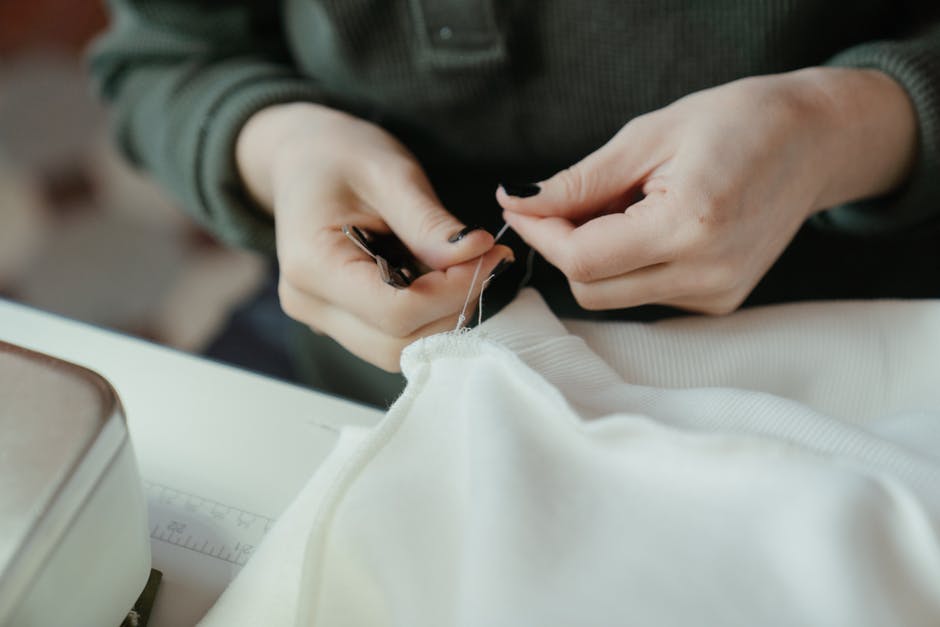According to recent statistics, 60 percent of people have never learned to sew. While sewing was once seen as a basic household skill, the rise of cheap, convenient clothing stores has made sewing less and less common.
So if you are new to sewing, don’t worry—you aren’t alone! Figuring out a sewing machine and all the sewing tips can be overwhelming, but there are a few tools and tricks you can use to get the hang of things.
Here are eleven sewing tips and tricks that will help set you on the right path.
Top Sewing Tips: Get the Right Machine
If sewing is a new pursuit for you, you don’t necessarily want to get the flashiest, most expensive sewing machine with all the bells and whistles. That will be more difficult to master, and isn’t necessary for the basic projects you’ll be tackling first.
Instead, get a modest machine from a trusted brand. And it doesn’t necessarily have to be brand-new—there are likely stores in your town that sell quality refurbished sewing machines in good condition.
And if you can’t find the right machine at a shop, remember that the internet is full of inexpensive gems.
Time to Study!
Now that you’ve got your sewing machine, it’s time to read the instruction manual. We know, that’s not the most exciting prospect—but it will ensure you’re well-prepared to get the most out of your machine.
And if you’re more of a visual learner, there are plenty of online tutorial videos out there! Just make sure you’re watching the right one for your make and model.
Start Small
You probably got into sewing because you loved the idea of making your own tops, dresses, purses, pants—the list goes on!
But before you take on any complicated projects that include elastic, zippers, or tricky lines, you need to have a few simpler projects under your belt. Try making a lined handkerchief, or a pillowcase with clean lines.
Once you learn the basics, you’ll be able to master more impressive pieces.
Stock Up on Sewing Pins and Cushions
Here’s a little not-so-secret sewing tip that any seasoned sewer knows: Your best friends as a sewer will be sewing pins and cushion!
These might seem like extraneous accessories but trust us: These nifty little contraptions make life so much easier.
Imagine you’re in the middle of an intense, multi-step sewing project—do you really want to be hunting around for the right needle? And what about when your needles fall on the floor; how will you be able to find it without a pin?
Fortunately, these devices are cheap and easy to find—you can even make the cushions yourself with your new sewing skills!
Other Important Tools
Besides pins and cushions, there are a few other helping sewing tools you’ll want to have in your arsenal.
These include scissors, a tape measurer, a ruler, bobbins, elastic, zippers, buttons, bias tape, velcro, and chalk pencils.
Know Your Thread Weight
If you were building a house, you’d want to make sure that the nails and screws you were using were meant to hold up a lot of weight. The same is true for sewing projects and thread: Different projects require differently weighted threads.
So rather than just buying whatever random thread catches your eye, pay attention to the weight, and know what your patterns call for.
What’s That Mean?
Like any hobby with a dedicated following, sewing comes with its own glossary of terms. If you don’t know what they all mean, then sewing becomes a lot harder.
For example, applique describes using a satin stitch to sew one piece of fabric over another. Bias tape is a special sewing tape that helps with edge cuts, and a fat quarter is a particular cut of some sort of fabric.
There are simply too many unique sewing terms to list here—so look for a good book, article, or expert sewing friend to help explain them all!
Take a Class
Want to hone your sewing skills and learn new sewing tips from an expert, and meet other people who have an interest in sewing?
If so, you should definitely consider taking a sewing class. They’re often taught at community centers, sewing and craft shops, and even community colleges.
Consider a Kit
Buying all the right patterns, fabric, thread, needles, and other supplies for a particular sewing project can be time-consuming, confusing, and expensive. Fortunately, there’s a solution to this problem: Buy a sewing kit!
A sewing kit comes with all the fabric and other tools you’ll need to complete a pre-patterned sewing project, as well as clear, simple directions on how to do the job.
If you are looking for an easy sew win that won’t waste fabric, a sewing kit is the way to go!
Flatten Your Fabrics
Before you tackle any new sewing project, you’re going to need to break out your iron and ironing board.
By ironing your fabrics before using them, you’ll ensure you will get clean, uniform cuts and lines. Plus, you don’t have to worry about fabric wrinkling and getting caught in the machine.
No Pressure
Here’s the thing: No matter how many sewing tips and tricks you learn before starting your first project, you are going to make mistakes. Directions are going to be confusing, and your first few projects probably won’t look like the picture that comes with the pattern.
But that’s okay! Sewing is a difficult skill to learn—and a rewarding one. If you stick with it and practice, you’ll be able to sew the stuff of your dreams someday.
Time to Stitch!
Now that you’ve got some sewing tips in your arsenal, it’s time to try your very first sewing project! We hope you learn—and that you have fun!
If you found this easy sewing guide helpful, we hope you’ll take the time to check out some other DIY articles on our website.
